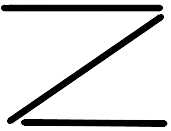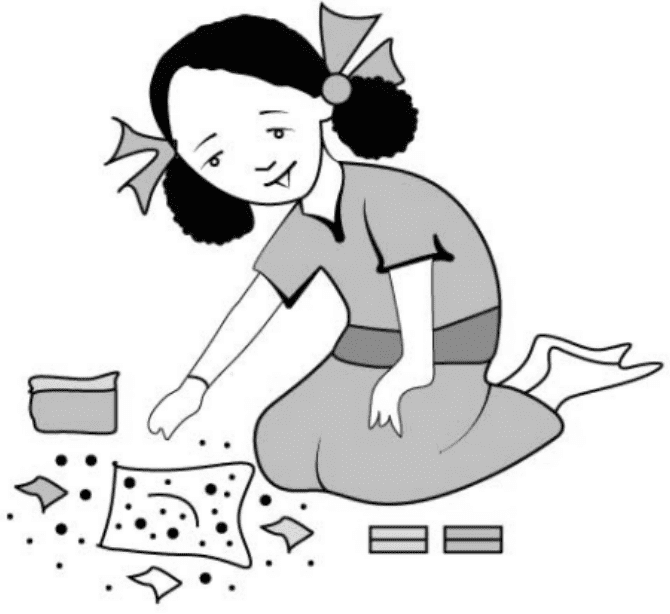NCERT Solutions For Class 6 Maths Chapter 11 Algebra Exercise 11.1 - 2025-26
FAQs on NCERT Solutions For Class 6 Maths Chapter 11 Algebra Exercise 11.1 - 2025-26
1. What are the key topics for which I can find solutions in NCERT Class 6 Maths Chapter 11, Algebra?
The NCERT Solutions for Class 6 Maths Chapter 11 provide step-by-step answers for all problems related to the core concepts of Algebra. The key topics covered include:
Introduction to variables using patterns (like matchstick patterns).
Forming algebraic expressions with variables and arithmetic operations.
Understanding the practical use of expressions in everyday situations.
Defining an equation and understanding its components (LHS and RHS).
Finding the solution of an equation using the trial and error method.
2. How many exercises are there in Class 6 Maths Chapter 11, and do the NCERT Solutions cover all of them?
According to the latest CBSE syllabus for 2025-26, Class 6 Maths Chapter 11 (Algebra) has five exercises: 11.1, 11.2, 11.3, 11.4, and 11.5. Vedantu provides detailed, step-by-step NCERT Solutions for all the questions in every single exercise, ensuring comprehensive coverage of the entire chapter.
3. How do the NCERT Solutions for Chapter 11 explain the correct method for solving a simple equation?
The NCERT Solutions for this chapter primarily introduce the 'trial and error' method for solving equations, which is foundational for Class 6. The solutions demonstrate the process clearly:
First, understand that an equation has a Left-Hand Side (LHS) and a Right-Hand Side (RHS).
Next, you substitute different values for the variable.
Finally, you check for which value the LHS becomes exactly equal to the RHS. That value is the solution to the equation.
4. How do you translate a word problem into an algebraic equation as shown in the Chapter 11 exercises?
Translating a word problem into an equation involves a few logical steps which are clearly explained in the solutions. First, you must identify the unknown quantity and represent it with a variable (like 'x', 'y', or 'n'). Then, you translate the relationships described in words (e.g., '5 more than a number', 'twice a number') into mathematical operations. For example, 'Sarita has 10 more marbles than Ameena' becomes m + 10, where 'm' is the number of marbles Ameena has.
5. What is the main difference between an 'algebraic expression' and an 'equation' in Class 6 Maths?
The key difference lies in the equals sign (=). An algebraic expression is a combination of numbers, variables, and operations, like 'x + 20' or '3n - 5'. It does not have a specific value. An equation, however, is a statement that two expressions are equal, such as 'x + 20 = 25'. An equation has a condition and is only true for a specific value of the variable, which is called its solution.
6. Why is the 'trial and error' method, used in NCERT Chapter 11 solutions, an important first step for solving equations?
The 'trial and error' method is a crucial introductory concept because it helps build a strong intuitive understanding of what a 'solution' actually is. By testing different values, you physically see how the balance of an equation works. It shows that only one specific value for the variable will satisfy the condition (LHS = RHS), which is the fundamental principle of solving any equation. This conceptual clarity is more important at this stage than learning complex rules.
7. When solving problems from Chapter 11, what is a common mistake students make with variables?
A common mistake is confusing a variable with a specific unknown number. It's important to remember that a variable like 'n' can represent any number in an expression or a general rule (like 2n for the perimeter of a square). However, in an equation, the variable holds a specific value that you need to find. The NCERT solutions help clarify this distinction by applying variables in both contexts across different exercises.
8. Why are Vedantu’s NCERT Solutions for Class 6 Maths Chapter 11 helpful for exam preparation?
For the 2025-26 session, these solutions are particularly helpful because Algebra is a new and abstract topic for Class 6 students. The solutions provide clear, step-by-step methods that make complex ideas easy to grasp. They ensure students don't just find the answer but also understand the correct methodology as per the CBSE curriculum. This builds a strong foundation, prevents common errors, and helps score better marks in exams.

































